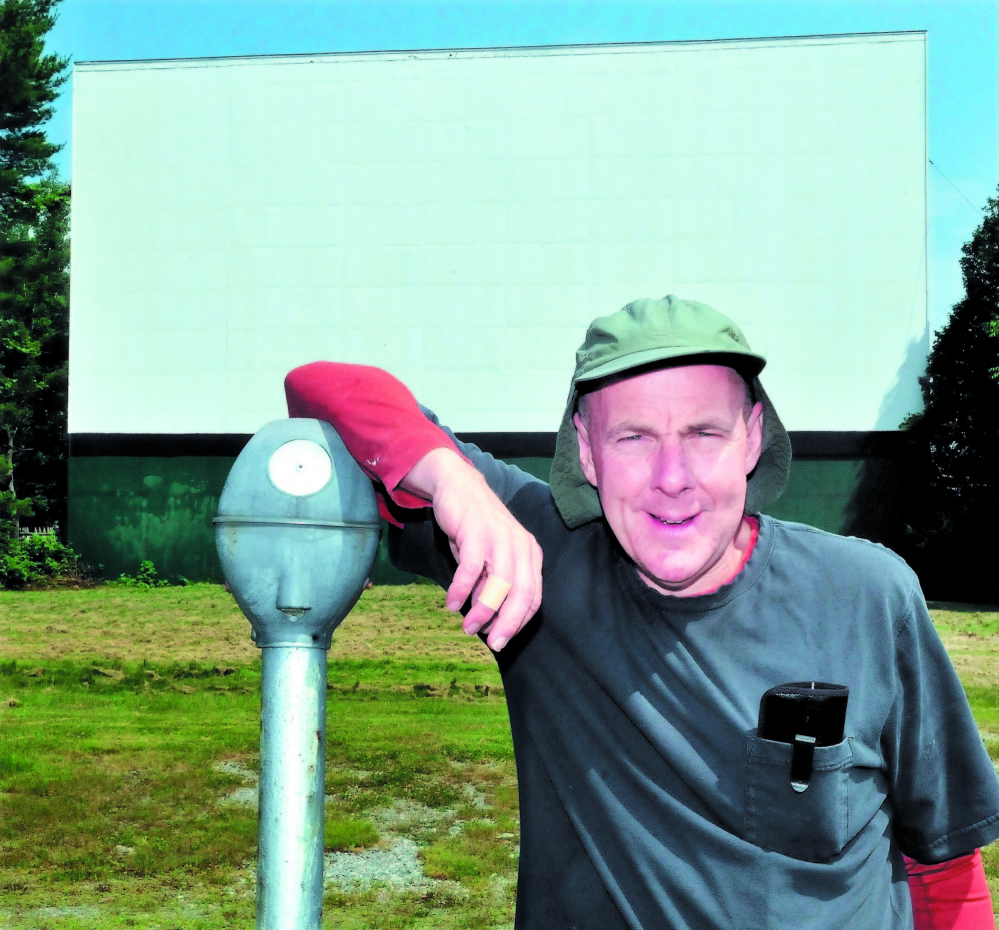SKOWHEGAN — The Skowhegan Drive-In theater could celebrate its 60th year of operation this summer by making it its final year of operation.
Major motion picture studios are phasing out 35 mm film reels in favor of digital movies. New, expensive equipment is needed, or it’s curtains for the venerable outdoor movie theater where generations have packed station wagons with coolers, lawn chairs and kids in pajamas and young lovers have turned for a night of cinema under the stars.
Donald C. Brown Jr., who lives in Felton, Del., bought the drive-in theater in May 2012. The quick conversion to digital by Hollywood movie producers took him by surprise.
“The dynamics of operating theaters in limited markets and seasonal situations like the Skowhegan Drive-In — those theaters wouldn’t have been built if the equation was back in the ’50s as it is today,” Brown said. “The industry has sort of culled the lower performing, limited market season theaters as they have deployed the digital projection systems.”
Brown said if Skowhegan and other communities across the country want to keep their drive-in theaters, there have to be efforts to help finance the operation.
Brown has launched a Facebook page where there are links to YouTube videos called “Save America’s Drive-ins” and “Save Skowhegan Drive-in,” along with a digital petition to urge American automakers to help save drive-ins and a link, “Help the Skowhegan Drive-In convert to Digital,” on fundrazr.com.
So far, Brown said, the drive-in has raised about $900 toward its goal of $56,000 for full conversion to digital, plus installation costs.
SACO DRIVE-IN MODEL
Ry Russell, who manages the Saco Drive-In on U.S. Route 1, brought awareness of the drive-ins’ digital-conversion plight to the public last year on Facebook. The move generated attention among people who wanted to keep America’s drive-in movie theaters open and got the attention of the American Honda Motor Co.’s Project Drive-In campaign last summer.
Russell applied for and won an $80,000 digital projector system through the contest, in which more than 2.6 million votes were cast in online voting. There were nine winning theaters, including the Saco Drive-in, which this summer will celebrate its 75th year of operation.
The premise of Honda’s Project Drive-In was simple: The company would set up a website where patrons and fans could vote for their favorite drive-in. As of June 2013, there were an estimated 357 drive-in movie theaters left in the United States, down form 4,000 or 5,000 in the late 1950s.
Brown said the Skowhegan Drive-In did not participate in the automaker’s campaign because he was not notified of the contest before the entry deadline had passed. Instead, he directed his vote to the Saco Drive-In and urged others to support it as well.
Brown said there have been some suggestion that Honda may do the promotion again, but that has not been confirmed.
“The model the drive-in operates on isn’t viable anymore,” he said. “It’s not just the digital projection system itself. It’s the maintenance that goes along with it. There a lot of theaters, both indoor and outdoor across the country, that are holding their breath to see if they can get through another season of operations and that’s the uncertainty that the Skowhegan faces.”
Brown said he hopes to employ digital equipment while maintaining the theater’s 35 mm equipment for older copies of popular movies and for some original reels from the 1960s of intermission clocks and pre-show trailers showing dancing hot dogs and other animated reminders to patronize the concession stand.
INDUSTRY WEIGHS IN
John Fithian, president and chief executive of the National Association of Theater Owners, said last summer the industrywide conversion from 35 mm film to digital satisfies modern demands for crisp clarity, cost savings and special effects such as 3-D.
For big-budget theaters where new releases occupy multiple screens, installing digital projectors was an easy business decision, he told the Huffington Post. Already, about 60 percent have converted in the United States, at a price of $70,000 to $80,000 a screen, Fithian said.
For the smaller venues, however, the cost was prohibitive.
Shannon Haynes, executive director of the Maine Film Center in Waterville, agrees, saying another studio announced just last week that it no longer would produce 35 mm prints.
“It’s definitely true that the industry switchover is happening and there are fewer and fewer 35 mm prints available,” Haines said. “That said, there are many theaters that I know of in Maine that have switched over and have been able to do so either through private fundraising or through their own financing. I have been pleasantly surprised at the number of people who have been able to weather the transition.”
The Maine Film Center is the parent organization of the Maine International Film Festival and owner of Railroad Square Cinema.
Haines said Railroad Square Cinema already has converted to digital, but also kept its 35 mm projection system in the largest theater, Cinema 1, where older or classic films are screened.
Doug Harlow — 612-2367dharlow@centralmaine.comTwitter: @Doug_Harlow
Send questions/comments to the editors.




Success. Please wait for the page to reload. If the page does not reload within 5 seconds, please refresh the page.
Enter your email and password to access comments.
Hi, to comment on stories you must . This profile is in addition to your subscription and website login.
Already have a commenting profile? .
Invalid username/password.
Please check your email to confirm and complete your registration.
Only subscribers are eligible to post comments. Please subscribe or login first for digital access. Here’s why.
Use the form below to reset your password. When you've submitted your account email, we will send an email with a reset code.